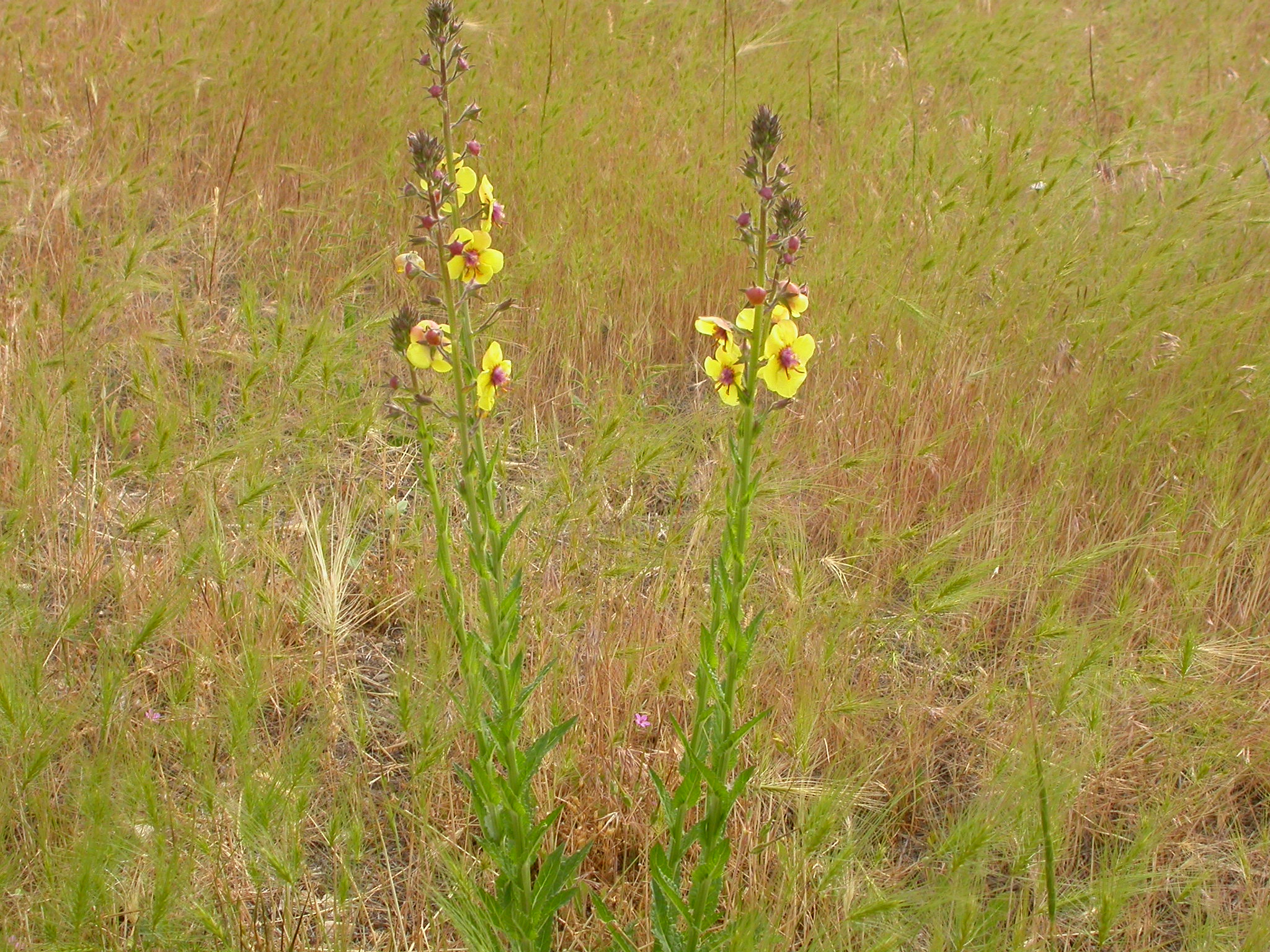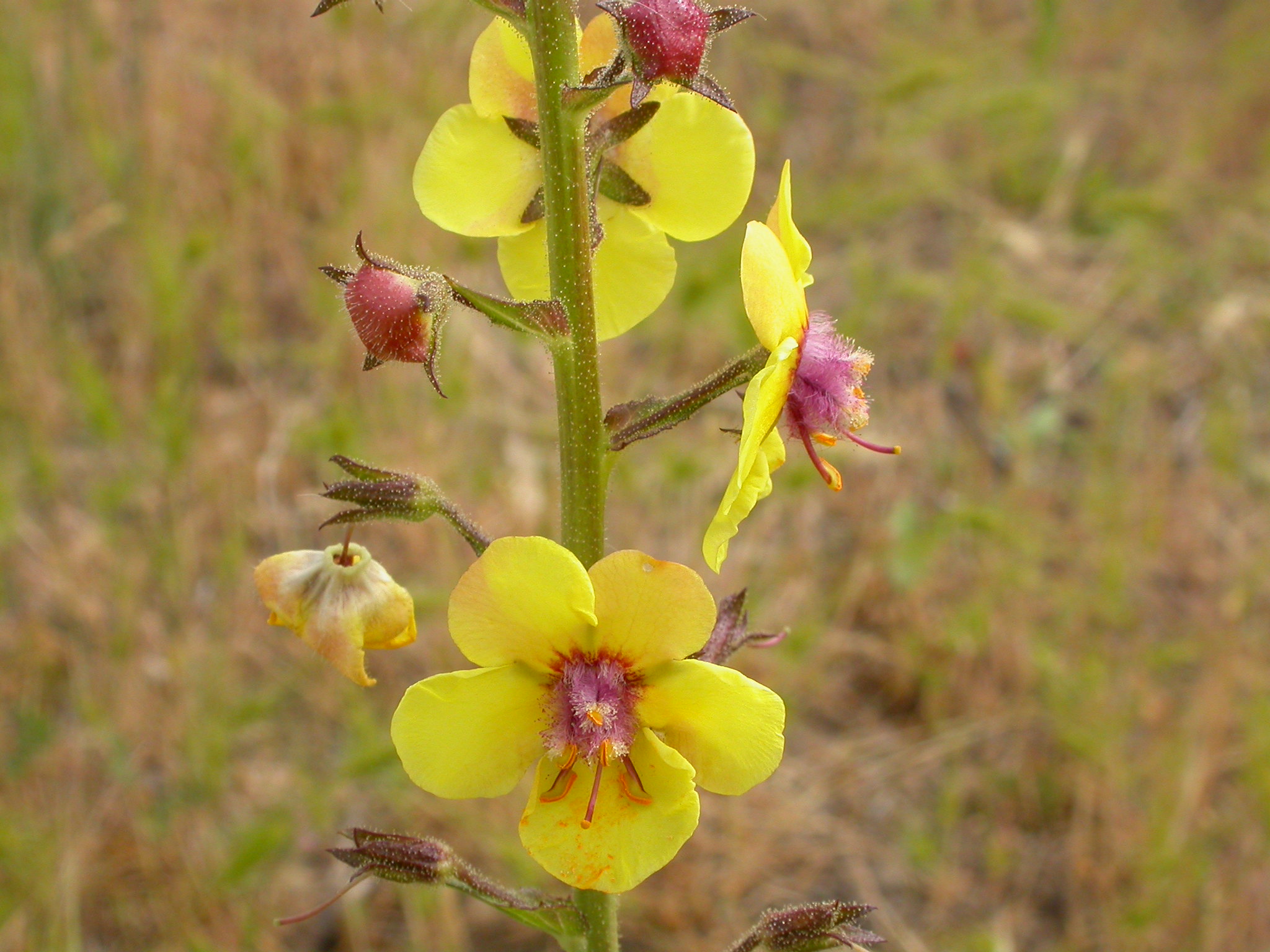Moth mullein (Verbascum blattaria)
Introduction

Photo: Matt Lavin, flickr.
Moth mullein (Verbascum blattaria) is a biennial forb native to Eurasia that was found in North America as early as 1818, likely introduced for ornamental or medicinal uses. Occurrences of moth mullein in Montana have increased over the last 10-12 years, especially in western Montana. Its cousin, common mullein (Verbascum thapsus), is more recognizable and even on several Montana counties’ noxious weed list. Moth mullein is not a noxious weed in Montana, but it is a restricted species in Colorado. Moth mullein is widely distributed across the U.S. and Canada and opinions about it range from “pretty wildflower” to invasive weed.
Identification

Photo: Matt Lavin, flickr.
Moth mullein may be viewed as a pretty wildflower because of its large (up to 1 inch wide) white to yellow flowers with purple centers. Each flower has five stamens with long, soft, curved hairs, making them look like a moth’s antennae. Flowers grow along a solitary stem 1 to 3 feet tall. Moth mullein blooms from the bottom to the top of the stem throughout summer, therefore a plant can have mature capsules with seeds at the bottom of the stem, open flowers in the middle, and flower buds at the top. Dark green rosette leaves are lobed along the edges, have prominent whitish veins, and lack hairs or are sparsely hairy (as opposed to common mullein which is very hairy). Stem leaves are like rosette leaves, although usually not as lobed and they have sharply pointed tips. Stem leaves are alternate and clasp the stem at the base. Tiny, dark brown seeds occur in round, hairy capsules. Moth mullein has a stout taproot and fibrous roots.
Biology, Ecology, and Management
Moth mullein reproduces via seeds, and a single plant can produce thousands of seeds that remain viable for decades. Habitat includes pastures, abandoned fields, vacant lots, roadsides, and other disturbed areas. Moth mullein prefers rich soils but can tolerate dry, sandy or gravely soils. The ecological impacts of moth mullein, positive or negative, are unknown. It is generally not utilized by wildlife or livestock, and there are no known toxicities associated with it. Like common mullein, moth mullein has been explored for medicinal uses. An extract derived from moth mullein has been effective against mosquito larvae, and the Latin derivative of blattaria is blatta, meaning “cockroach,” refers to its use as an insect repellant. For management, don’t let moth mullein go to seed. Use a shovel to sever plants below the root crown or mow/cut plants at bolting to early flowering stage. Several post-emergent herbicides provide mullein control including 2,4-D, aminopyralid, picloram, chlorsulfuron, and metsulfuron.
Story from the Field |
|
How long seeds can live in the soil is important for weed management but difficult
to study. In 1879 Dr. William James Beal at Michigan Agricultural College (now Michigan
State University) buried seeds of 23 plant species, including moth mullein, and began
retrieving a portion of the seeds every 5 years to test viability. Researchers continued
the study after Dr. Beal retired. In 2000 F. Telewski and J. Zeevaart retrieved seeds
once again, placed them in trays, and watered them. Moth mullein was one of two species
that germinated and grew to maturity—120 years after they were first buried! If you
wish to manage moth mullein, make sure to keep it from producing seed. Want to know
more about the study, including what other species lived 120 years? Read Telewski and Zeevaart, 2002, American Journal of Botany, 89(8):1285-1288.
|
Further Information
For more information about this month's weed post, contact Extension Invasive Plant Specialist Jane Mangold. Past posts are available in the Monthly Weed Post Directory.
THis weed post is also available as a printable PDF (237 KB).
